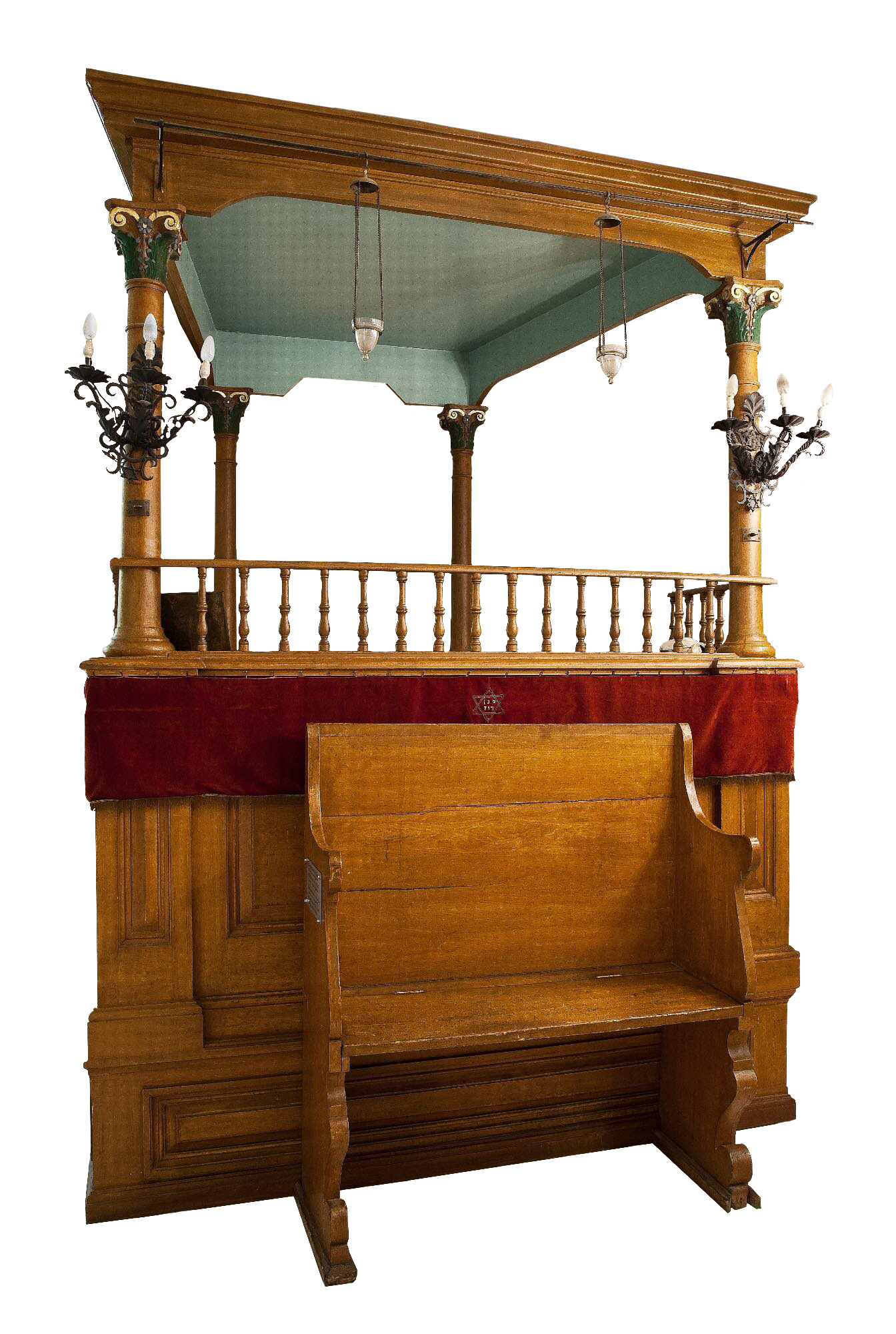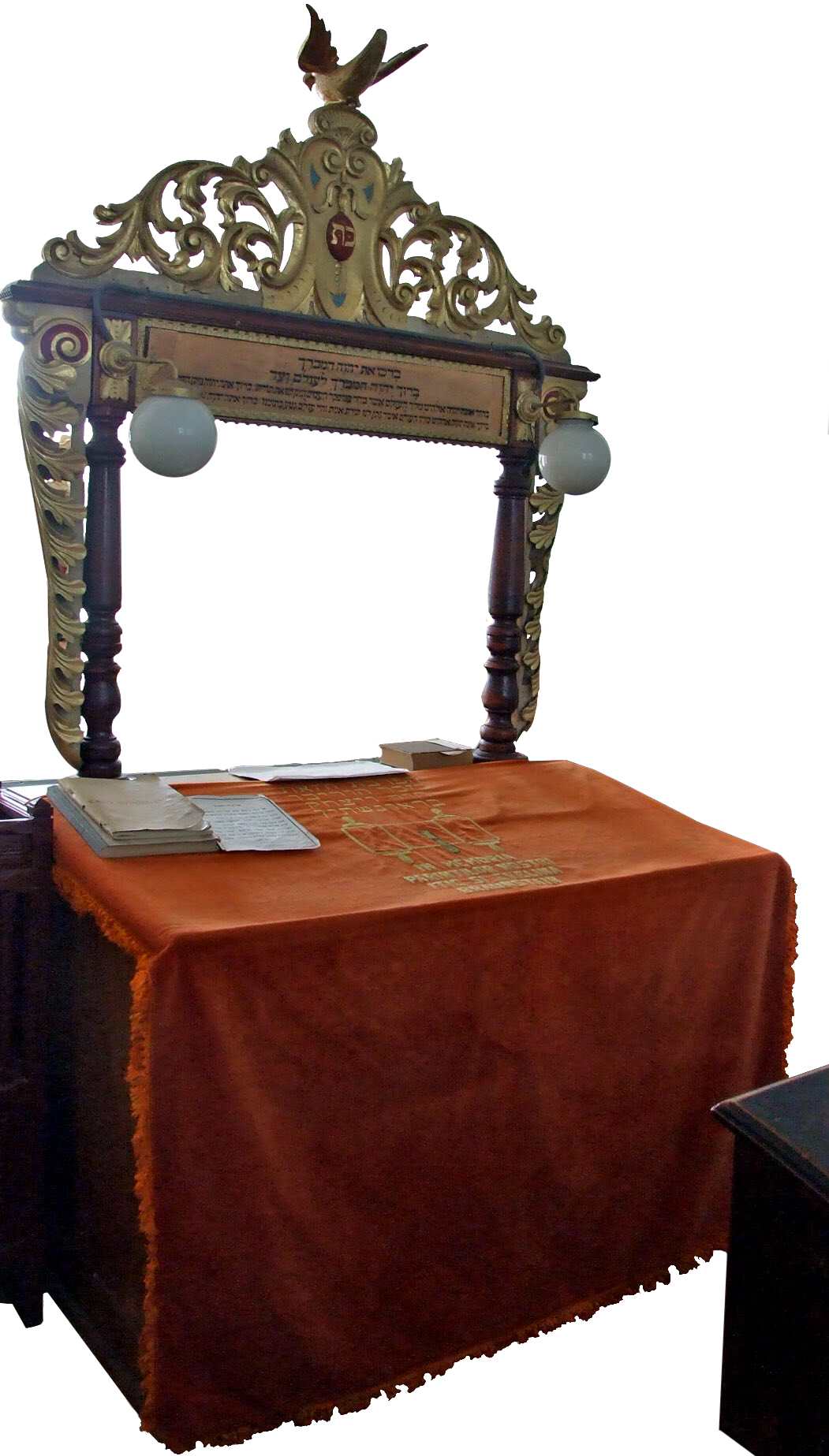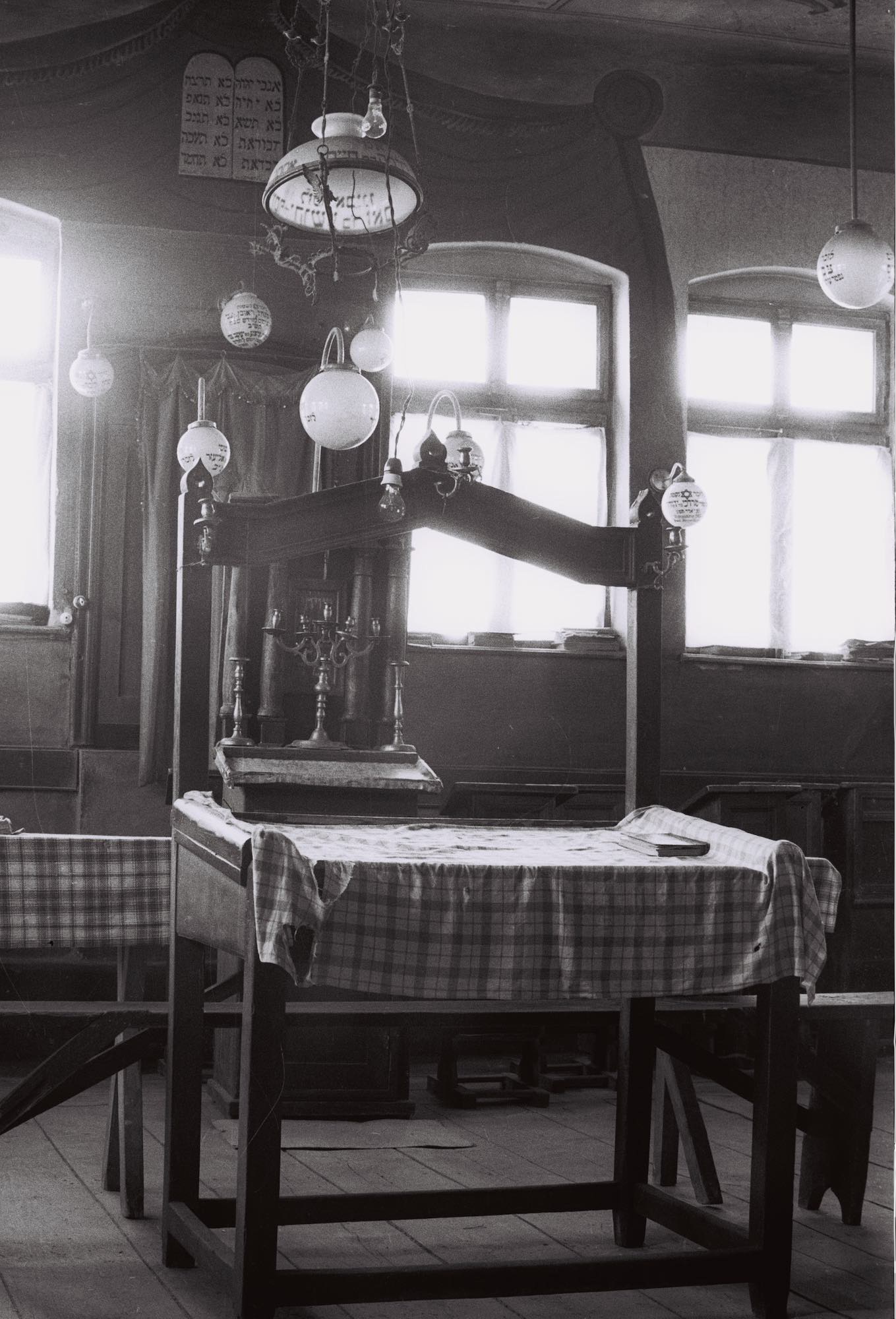(tebá)

Atril sobre una plataforma elevada en la que se lee la Torá.



The restored Rumbach Synagogue in Budapest with its retractable bimah.
Bunin Benor, Sarah. “Almemar.” Jewish English Lexicon, 2012.
“Bimah.” Encyclopedia Judaica. Vol. 4, Jerusalem: Keter Publishing House, 1972, pp. 1002-6.
Levine, Lee I. The Ancient Synagogue: The First Thousand Years, London: Yale University Press, 2005, pp. 319-23.
Davidovitch, David. “Tichnun ulam ha’Tfila be’vatei-kneset italkiym [Design of Italian Synagogue Interiors].” Divrei ha’kongres ha’olami le’mada’ei ha’yahadut. Proceedings of the World Congress of Jewish Studies,vol. 5, 1969, pp. 37-43.
Herselle Krinsky, Carol. Synagogues of Europe: Architecture, History, Meaning, Mineola: Dover Publications, 1996, pp. 21-24.
Levin, Vladimir. “Synagogues in Lithuania: A Historical Overview.” Synagogues in Lithuania A-M: A Catalogue, Vilnius: Vilnius Academy of Arts Press, 2010, pp. 15-40.
Muchawsky-Schnapper, Ester. “A Unique Yemenite Tevah from San’a.” The Israel Museum Journal, vol. 15, 1997, pp. 67-93.
Narkiss, Bezalel. “The Heikhal, Bimah and Teivah in Sephardi Synagogues.” Journal of Jewish Art, edited by Aliza Cohen-Mushlin, vol. 18: Sepharad, 1992, pp. 31-47.
Weissbach, Lee Shai. “The architecture of the Bimah in American Synagogues: Framing the Ritual.” American Jewish History, vol. 91, no. 1, 2003, pp. 29-51.
Seleccionar idioma